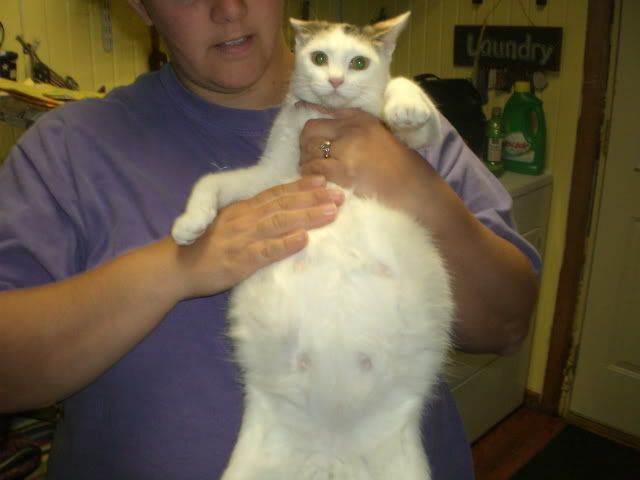Signs that your cat is
pregnant.
Cats will start showing signs
of pregnancy in about three weeks, which include physical and personality
changes.
Physical changes in a pregnant
cat include:
* Increased appetite
* Heat cycles cease
* Abdominal enlargement
* Nausea/Possible Vomiting
Personality changes in a pregnant cat include:
* "Nesting" -
searching for a secluded place to nest prior to delivery
* Increased need of affection
and attention from her owner
* Irritability toward other
pets
The number of kittens in a
given litter is hard to predict, although it can range from one to eight
kittens. Your veterinarian may be able to tell you the correct number of
kittens by counting the heads - by palpating your cat's abdomen, or he can
perform an ultrasound.
If your cat was healthy prior
its pregnancy, it will be easier to keep her in good health through delivery.
Although, if your cat had any health issues or issues prior its pregnancy, make
sure your veterinarian will be involved throughout the entire pregnancy time
and delivery.
Nutritious food is also
important to a healthy cat pregnancy. Make sure you feed your cat with the
highest quality food. If you are planning to give your cat supplements, be sure
to ask your veterinarian for the right supplement. Some supplements can
compromise the nutrition in your cat's balanced diet and hurt more than help.
The pregnant cat will eat several
times a day, so be sure to leave plenty food. Note that one or two days before
she gives birth she may stop eating.
It is also recommended that
during the last three to four weeks prior to delivery and while nursing, your
cat should eat about two to four times her regular amount of food.
Cat Pregnancy - Delivery time!
Giving birth is a natural
process, and your cat will rely on her maternal instincts. The only thing you
will need to do is to stay by her side during the birthing process to monitor
what happens. Only intervene if she needs your assistance.
The kittens are born within
their amniotic sacs, which your cat will remove. If for any reason, she does
not remove the kitten from its sac, you will need to do it. You will need to
carefully cut the sac and stimulate the kitten's breathing by rubbing it gently
with a rough dry towel.
During the birth of her
kittens, a mother cat will sever the umbilical cord by chewing it, and she will
remove the sac by licking it. Then she will stimulate the kittens to breathe by
washing them with her rough tongue. It is also normal for a cat to eat the
placenta. Once the kittens are breathing, they will move toward the cat's
nipple.
If you notice that your cat is
having any complications during the delivery, please contact your veterinarian
immediately.
Postnatal care of your cat and
kittens.
Now that the kittens have
arrived, the next three weeks will be the extremely important for your cat and
her newborn kittens. During this time the female cat should be recovering from
the delivery, keep your eyes open for any signs of post-partum problems, such
as bleeding or vomiting. If your cat is having problems take her to the Vet
immediately.
It is also important that you,
family members and other pets leave her alone, your cat and her kittens should
be in a quiet part of your house. You can stop by to check up on them, but let
your cat come to you for attention. And, make sure the room is warm enough,
chilling temperature can be harmful to the kittens.
Finding homes for the kittens.
It will take a little work, but
we are sure you will find good homes for your kittens!


No comments:
Post a Comment